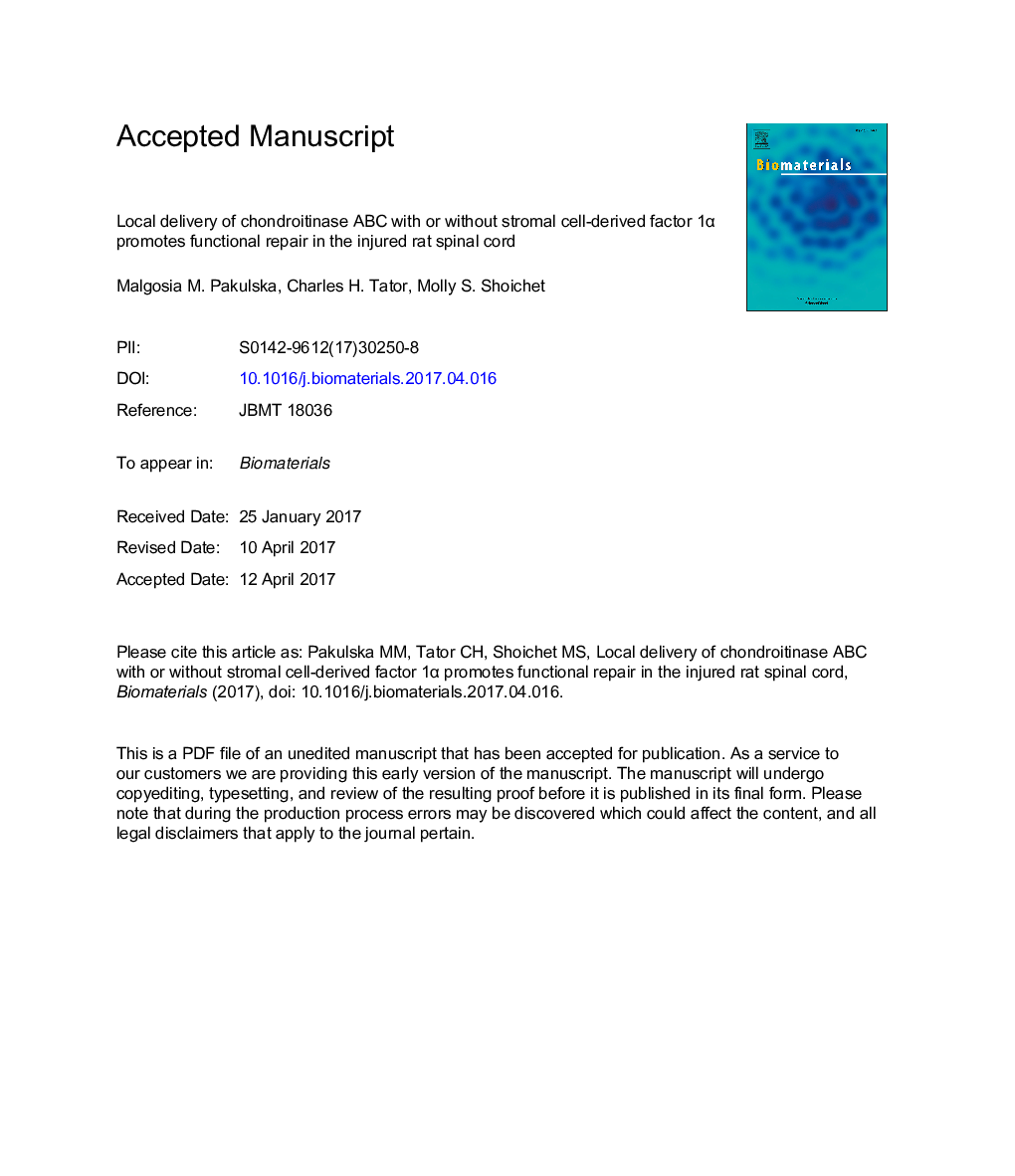| Article ID | Journal | Published Year | Pages | File Type |
|---|---|---|---|---|
| 4752333 | Biomaterials | 2017 | 28 Pages |
Abstract
Traumatic spinal cord injury (SCI) is a devastating event for which functional recovery remains elusive. Due to the complex nature of SCI pathology, a combination treatment strategy will likely be required for success. We hypothesized that tissue and functional repair would be achieved in a rat model of impact-compression SCI by combining degradation of the glial scar, using chondroitinase ABC (ChABC), with recruitment of endogenous neural precursor cells (NPCs), using stromal cell-derived factor 1α (SDF). To test this hypothesis, we designed a crosslinked methylcellulose hydrogel (XMC) for minimally invasive, localized, and sustained intrathecal drug delivery. ChABC was released from XMC using protein-peptide affinity interactions while SDF was delivered by electrostatic affinity interactions from polymeric nanoparticles embedded in XMC. Rats with SCI were treated acutely with a combination of SDF and ChABC, SDF alone, ChABC alone, or vehicle alone, and compared to injury only. Treatment with ChABC, both alone and in combination with SDF, resulted in faster and more sustained behavioural improvement over time than other groups. The significantly reduced chondroitin sulfate proteoglycan levels and greater distribution of NPCs throughout the spinal cord tissue with ChABC delivery, both alone and in combination with SDF, may explain the improved locomotor function. Treatment with SDF alone had no apparent effect on NPC number or distribution nor synergistic effect with ChABC delivery. Thus, in this model of SCI, tissue and functional repair is attributed to ChABC.
Keywords
Related Topics
Physical Sciences and Engineering
Chemical Engineering
Bioengineering
Authors
Malgosia M. Pakulska, Charles H. Tator, Molly S. Shoichet,
